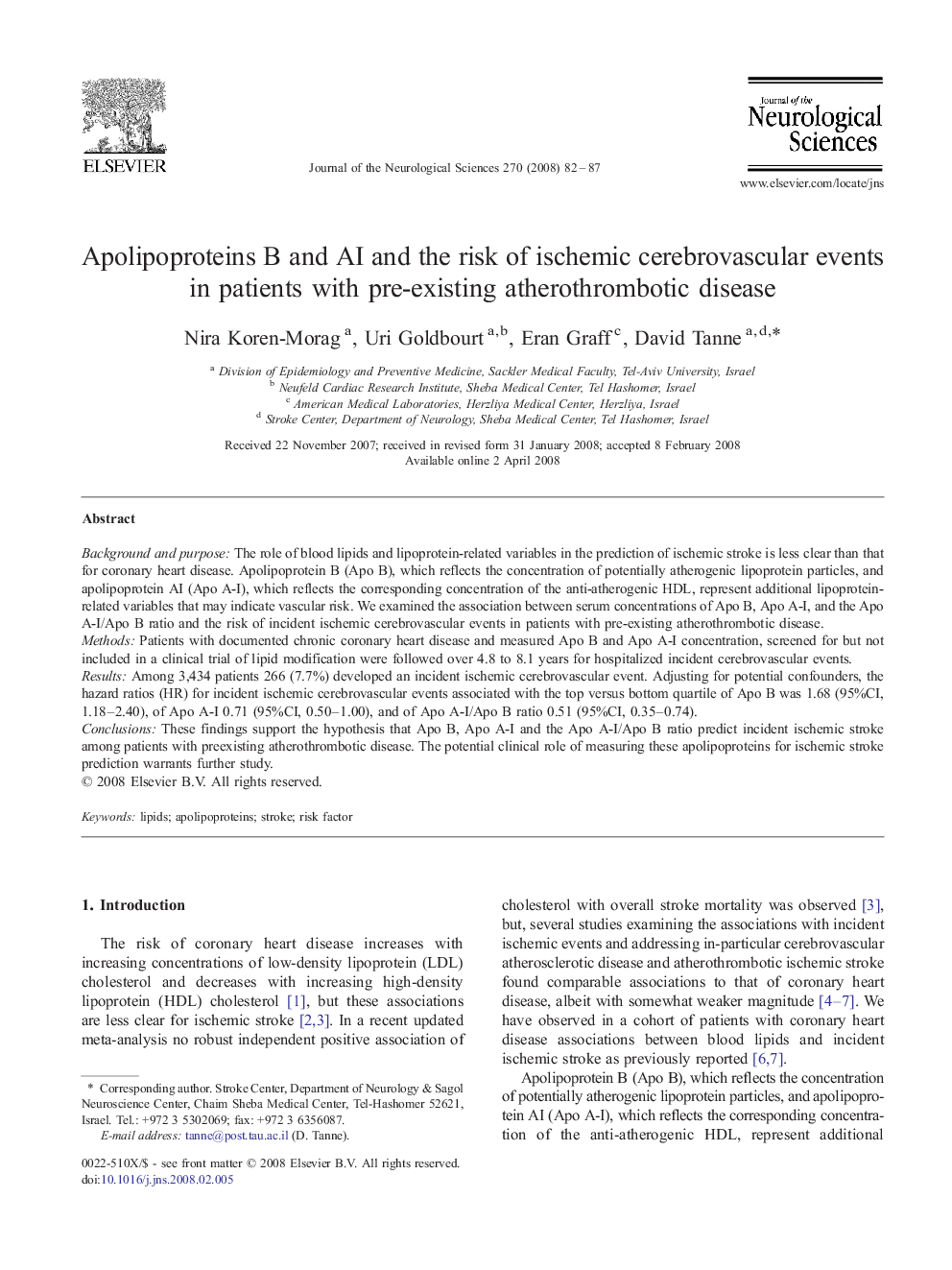| Article ID | Journal | Published Year | Pages | File Type |
|---|---|---|---|---|
| 1915657 | Journal of the Neurological Sciences | 2008 | 6 Pages |
Background and purposeThe role of blood lipids and lipoprotein-related variables in the prediction of ischemic stroke is less clear than that for coronary heart disease. Apolipoprotein B (Apo B), which reflects the concentration of potentially atherogenic lipoprotein particles, and apolipoprotein AI (Apo A-I), which reflects the corresponding concentration of the anti-atherogenic HDL, represent additional lipoprotein-related variables that may indicate vascular risk. We examined the association between serum concentrations of Apo B, Apo A-I, and the Apo A-I/Apo B ratio and the risk of incident ischemic cerebrovascular events in patients with pre-existing atherothrombotic disease.MethodsPatients with documented chronic coronary heart disease and measured Apo B and Apo A-I concentration, screened for but not included in a clinical trial of lipid modification were followed over 4.8 to 8.1 years for hospitalized incident cerebrovascular events.ResultsAmong 3,434 patients 266 (7.7%) developed an incident ischemic cerebrovascular event. Adjusting for potential confounders, the hazard ratios (HR) for incident ischemic cerebrovascular events associated with the top versus bottom quartile of Apo B was 1.68 (95%CI, 1.18–2.40), of Apo A-I 0.71 (95%CI, 0.50–1.00), and of Apo A-I/Apo B ratio 0.51 (95%CI, 0.35–0.74).ConclusionsThese findings support the hypothesis that Apo B, Apo A-I and the Apo A-I/Apo B ratio predict incident ischemic stroke among patients with preexisting atherothrombotic disease. The potential clinical role of measuring these apolipoproteins for ischemic stroke prediction warrants further study.
